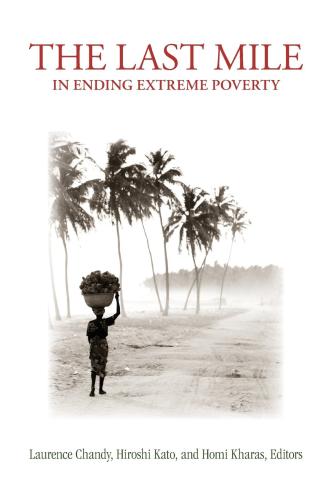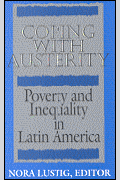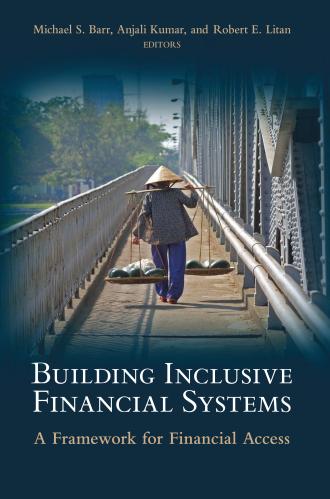Studies in this week’s Hutchins Roundup find that small businesses are financially fragile, many individuals experience persistent poverty, and more.
Want to receive the Hutchins Roundup as an email? Sign up here to get it in your inbox every Thursday.
Most small businesses lack enough cash to sustain themselves for more than a month
Alexander W. Bartik from the University of Illinois and coauthors survey more than 5,800 small businesses and find that 41% have temporarily shut down and nearly 2% have shut down permanently due to the COVID-19 crisis. Drawing from responses collected between March 26th and April 2nd, they show that employment at these businesses has declined by 40% since January 31, with the number of full time and part-time employees down by 32% and 56% respectively. The median firm with under $10,000 in monthly expenses has one month of cash on hand, they find, and the median firm with monthly expenses above $10,000 has less than 15 days of cash. While 72% of surveyed businesses plan to seek funding through the CARES act, 13% don’t anticipate taking out these loans because of the application hassle, fear that the government won’t forgive them, or worry about complicated eligibility criteria. The authors emphasize that streamlining the application and clarifying eligibility criteria and loan forgiveness rules might increase the take-up rate for loans and prevent businesses from closing permanently.
A large share of U.S. households have experienced poverty since the Great Recession
Using a new panel of household-level incomes from tax record data, Jeff Larrimore from the Federal Reserve Board and Jacob Mortenson and David Splinter from the Joint Committee on Taxation find that there was substantial movement into and out of poverty in the U.S. between 2007 and 2018. They estimate 1 in 10 people were in poverty in any given year during this period and 4 in 10 people spent at least one year in poverty. However, many who experienced poverty either spent several consecutive years in poverty or escaped it only to return in a future year. For example, the authors show that 57% of people in poverty in 2007 remained in poverty one year later and 28% were in poverty ten years later. Among those who were in poverty at some point between 2007 and 2018, the average time spent in poverty was three years. Moreover, the persistence of poverty differs greatly by age. While the poverty rate was highest among adults aged 18-24, this age cohort had the least persistent poverty. In contrast, poverty is most persistent for adults over 65 even though this group had the lowest annual poverty rates. The authors conclude that while there are substantial benefits to policies that alleviate economic hardships from short transitory poverty spells, many individuals still experience chronic poverty over many years.
Employers do not always comply with minimum wage increases
Using data from the Current Population Survey, Jeffrey Clemens of the University of California, San Diego, and Michael Strain of the American Enterprise Institute find that some employers in the low-wage labor market pay workers less than the minimum wage. Examining a series of minimum wage increases from 2011 to 2019, the authors estimate that workers would have gained an additional 14 to 22 percent if employers had fully complied with the increases. While compliance with minimum wage laws is the norm, the authors say, avoidance and evasion are nontrivial. The authors also find that minimum wage increases lead to more underpayments in states with strong enforcement regimes. “Increases in avoidance and evasion can be large under strong enforcement regimes because evasion is more prevalent under weak enforcement regimes to begin with,” they say.
Chart of the week: IMF predicts a recession far worse than the Great Recession
Quote of the week:
“A pandemic scenario had been raised as a possibility in previous economic policy discussions, but none of us had a meaningful sense of what it would look like on the ground and what it would mean for the economy. We now encounter a grim reality, where exponential growth of contagion means 100 infected individuals become 10,000 in a matter of a few days. Tragically, many human lives are being lost and the virus continues to spread rapidly across the globe. We owe a huge debt of gratitude to the medical professionals and first responders who are working tirelessly to save lives,” says Gita Gopinath, Economic Counsellor and Director of the Research Department at the International Monetary Fund.
“This crisis is like no other. First, the shock is large. The output loss associated with this health emergency and related containment measures likely dwarfs the losses that triggered the global financial crisis. Second, like in a war or a political crisis, there is continued severe uncertainty about the duration and intensity of the shock. Third, under current circumstances there is a very different role for economic policy. In normal crises, policymakers try to encourage economic activity by stimulating aggregate demand as quickly as possible. This time, the crisis is to a large extent the consequence of needed containment measures. This makes stimulating activity more challenging and, at least for the most affected sectors, undesirable.”












Commentary
Hutchins Roundup: Small businesses, poverty, and more.
April 16, 2020